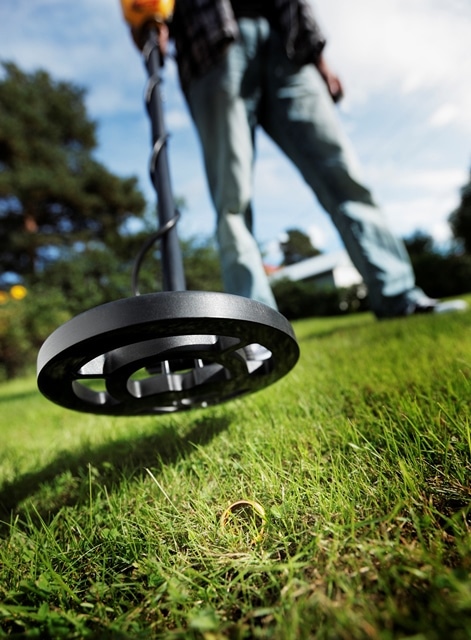Nov 4 2013
Metal detectors are portable electronic devices used for detecting the presence of any metal within close range. These instruments operate by sensing changes in magnetic waves caused by being in close proximity to metal.
In 1881, Alexander Graham Bell invented the first metal detector. However, it was Gerhard Fischar’s portable metal detector that became widely used after 1925.
The metal detectors have become predominantly popular in the area of security over the last decade. Metal detectors are used at airports, government agencies, office buildings, schools, and prisons to prevent anyone from carrying a weapon into the premises.
Metal detectors can vary in sensitivity and cost.

Credits: Photos.com.
Types of Metal Detectors
Metal detectors are designed around one of three technologies - very low frequency (VLF), beat-frequency oscillation (BFO), and pulse induction (PI).
- Very low frequency (VLF) -based metal detector – This detector is widely used for the detection of various metals. It consists of two round wire coils and an electronic circuit called a phase demodulator, which filters the signal from a receiver. As different types of metals reflect different signals, the role of the phase demodulator is vital as it can be programmed to focus only on the desired range of signal and to ignore the rest.
- Beat frequency oscillation (BFO) -based metal detectors – This detector is simple and has an inexpensive design. The detector is made up of two separate wire coils for detection, but lacks the filtering ability of VLF detectors. This device is used mostly by amateur hobbyists.
- Pulse induction (PI) -based metal detectors - This detector has a more specialized unit that enables detection of metal items buried deep under the surface. Large models of PI detectors can be seen at security checkpoints to detect weapons. It consists of only one coil and uses the timed pulse method. The device can distinguish between signals it has transmitted and stray signals from nearby areas. This detector is relatively more accurate but also more expensive.
Working Principle
The following are some of the key components found in a metal detector unit:
- Control box – The transmit signal is generated from here and the receive signal is processed and converted into a target response in the box.
- Search coil – The coil is used for transmitting the electromagnetic field into the ground and receiving the return electromagnetic field from a target.
Metal detectors operate by transmitting an electromagnetic field from the search coil into the ground. Any metal objects referred to as “targets” that are within the electromagnetic field become energized and retransmit an electromagnetic field of their own. The search coil receives this electromagnetic retransmitted field and sounds an alert.
Applications
The following are some of the key application areas of metal detectors:
- Security screening.
- Industrial metal detectors used in the food, beverage, textile, garment, chemicals, pharmaceutical, lumber, plastics, and packaging industries.
- Civil engineering and archeology.
- As a hobby – For beach combing, coin shooting, prospecting for valuable metals such as gold and silver.
References